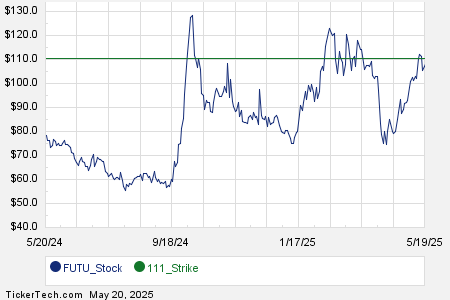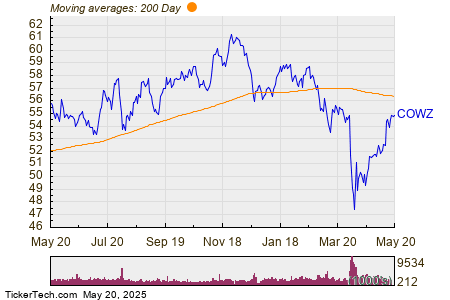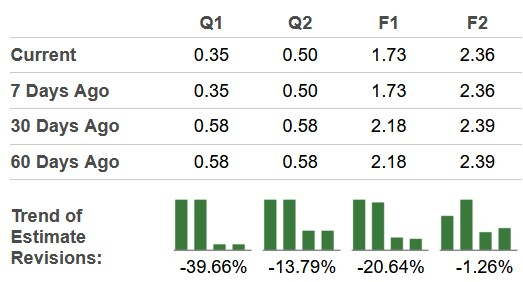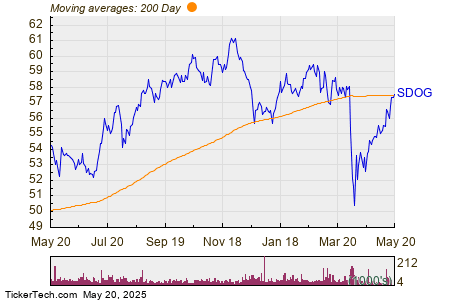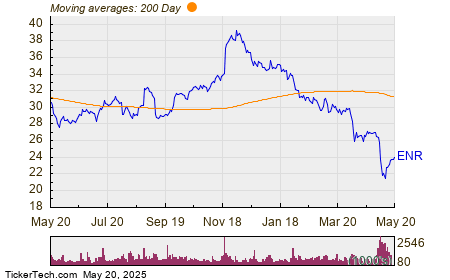Intel’s Stock Struggles While Dell and Workday Stand Out
Intel‘s (NASDAQ: INTC) stock hit its all-time high of $74.88 during the dot-com bubble on August 3, 2000, resulting in a market capitalization of $298.4 billion. At that time, the company was the leading producer of x86 CPUs for PCs and servers, making it a favorable long-term investment.
Currently, however, Intel’s shares trade around $21, with a market cap of $94.5 billion. A decline in net income over the past six years, a halt in stock buybacks for four years, and the suspension of its dividend at the end of 2024 have contributed to this downturn. Additionally, Intel was replaced by Nvidia in the Dow index last November.

Image source: Getty Images.
Long-term investors in Intel have faced disappointment as the company has lagged behind TSMC in the crucial “process race” for manufacturing smaller and denser chips. It has lost ground in the PC CPU market to AMD and failed to capitalize on opportunities in mobile and AI markets. The company’s leadership issues, marked by four CEO changes in under seven years, have added to concerns.
Analysts project that from 2024 to 2027, Intel’s revenue will grow at a modest compound annual growth rate (CAGR) of 2%. They expect profitability to return by 2027, assuming the company’s current turnaround strategies succeed, but its valuation at 23 times projected 2027 earnings still raises questions about its attractiveness as an investment.
Rather than wait to see if Intel can regain its footing, investors might consider two tech firms that show stronger growth potential: Dell Technologies (NYSE: DELL) and Workday (NASDAQ: WDAY).
Dell Technologies
Dell ranks among the largest manufacturers of PCs, servers, and data storage products. In fiscal 2025, ending in February, the client solutions group—responsible for PCs and peripherals—accounted for 51% of revenue, with another 46% from the infrastructure solutions group, which focuses on servers and storage. The infrastructure segment is outpacing the client segment, benefitting from the rapid growth of the artificial intelligence (AI) market.
Dell anticipates that increasing sales of dedicated AI servers will help counterbalance the slower growth in its traditional PC and data storage sectors. It projects at least $15 billion in revenue from AI servers, representing 15% of projected fiscal 2026 sales.
This makes Dell an appealing alternative to Super Micro Computer, a smaller competitor that has excelled with its liquid-cooled AI servers.
With a market cap of $79.7 billion, analysts expect Dell’s revenue and earnings per share (EPS) to grow at CAGRs of 6% and 15%, respectively, between fiscal 2025 and fiscal 2028. This growth is notable for a company with a stock trading at 15 times this year’s earnings.
If Dell meets these estimates and maintains its valuation, its stock price could increase nearly 30% to $147 per share within the next two years, elevating its market cap to about $102 billion. Should Intel continue to struggle, Dell’s value may surpass Intel’s by 2027.
Workday
Initially focused on cloud-based finance and human resources, Workday has expanded to include comprehensive human capital management (HCM) tools. From fiscal 2015 to fiscal 2025, its revenue grew at a CAGR of 27%. It has remained profitable over the last two fiscal years after implementing cost-cutting measures.
Today, Workday serves over 11,000 clients, including 60% of the Fortune 500. Its services are designed to help companies grow efficiently during economic upturns while allowing flexibility to cut costs during downturns. The company is also enhancing its HCM services with generative AI tools.
Looking ahead to fiscal 2025 through 2028, analysts expect Workday to achieve revenue and EPS growth at CAGRs of 13% and 41%, respectively. While its stock is priced at 93 times this year’s earnings, rapid earnings growth may justify this higher valuation.
If Workday meets analyst expectations and maintains its current multiple, its stock price could rise 85% to $506 per share over the next two years, increasing its market cap from $73 billion to $135 billion. Should Workday continue its upward momentum while Intel’s growth stalls, it might surpass Intel in market value by mid-2027.
Should You Invest $1,000 in Intel Right Now?
Before purchasing shares in Intel, consider the following:
The analyst team identified what they believe are the 10 best stocks to invest in right now, and Intel is not among them. The selected stocks could offer substantial returns in the coming years.
For instance, if you had invested in Netflix on December 17, 2004, your $1,000 would now be worth $642,582!*
And if you had invested in Nvidia on April 15, 2005, your investment would now be worth $829,879!*
Overall, the average return for the stock recommendations stands at 975%, outperforming the S&P 500’s 172% return.
*Returns as of May 19, 2025
Leo Sun has no position in any of the stocks mentioned. The Motley Fool holds positions in and recommends Advanced Micro Devices, Intel, Nvidia, Taiwan Semiconductor Manufacturing, and Workday. The Motley Fool recommends shorting May 2025 $30 calls on Intel. The Motley Fool has a disclosure policy.
The views expressed here are those of the author and do not necessarily reflect those of Nasdaq, Inc.
